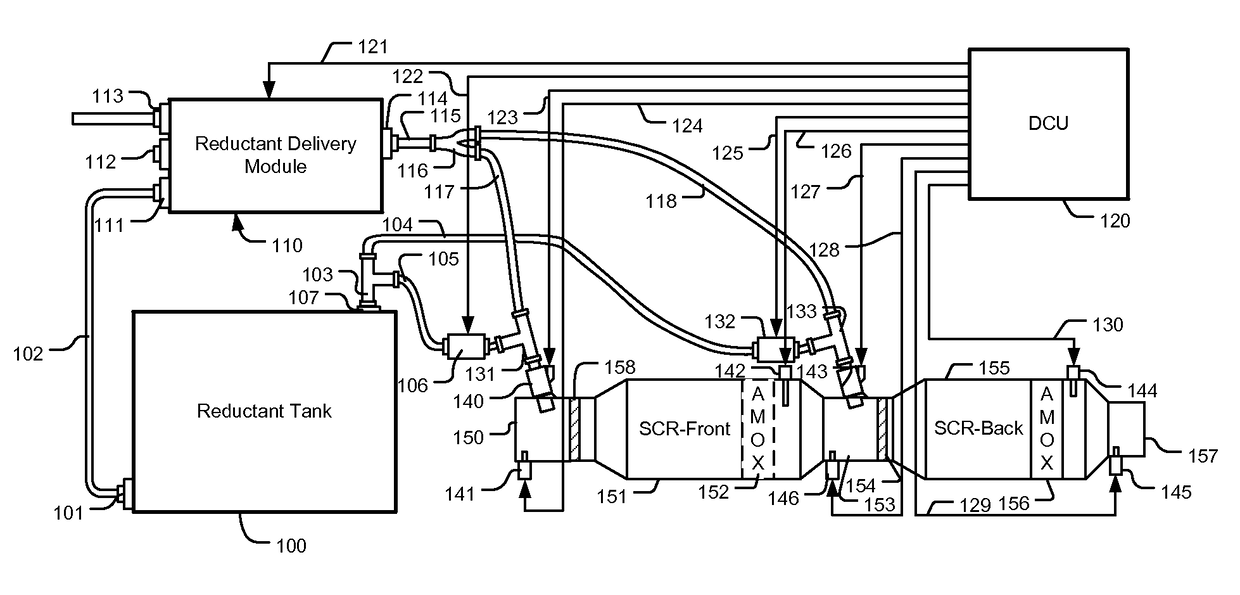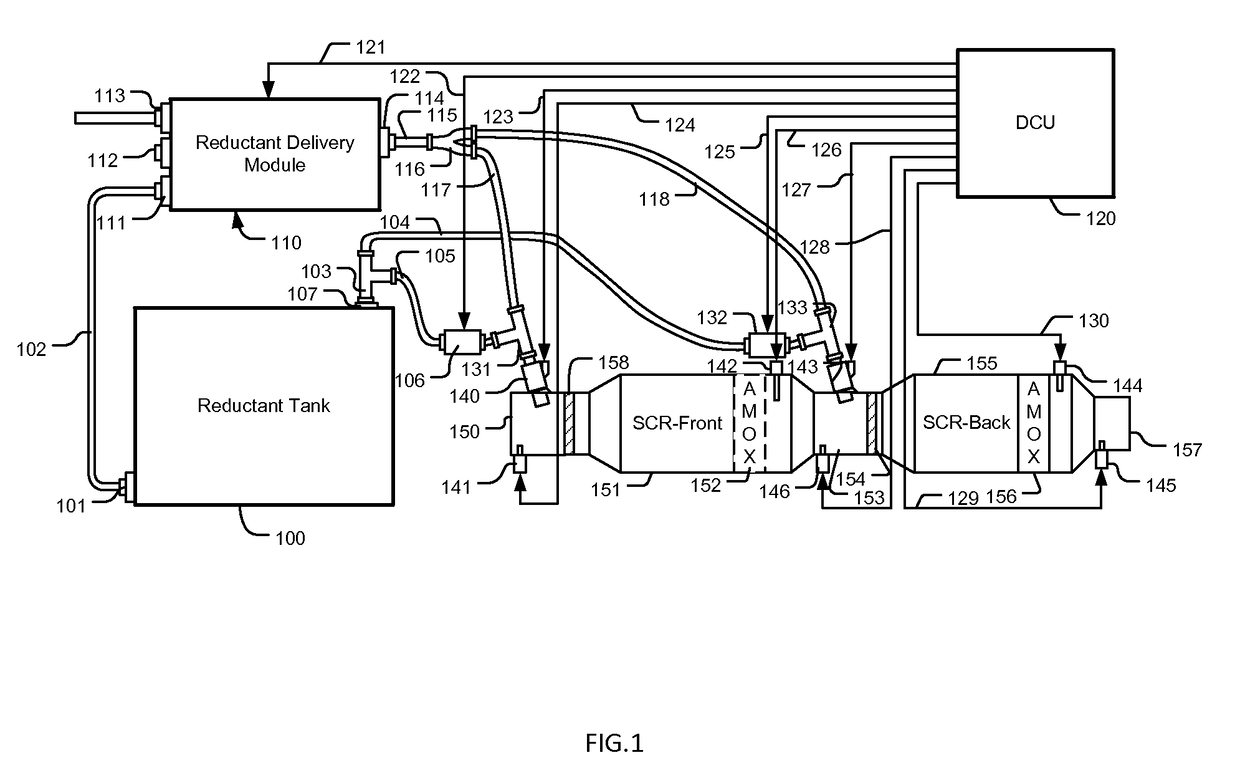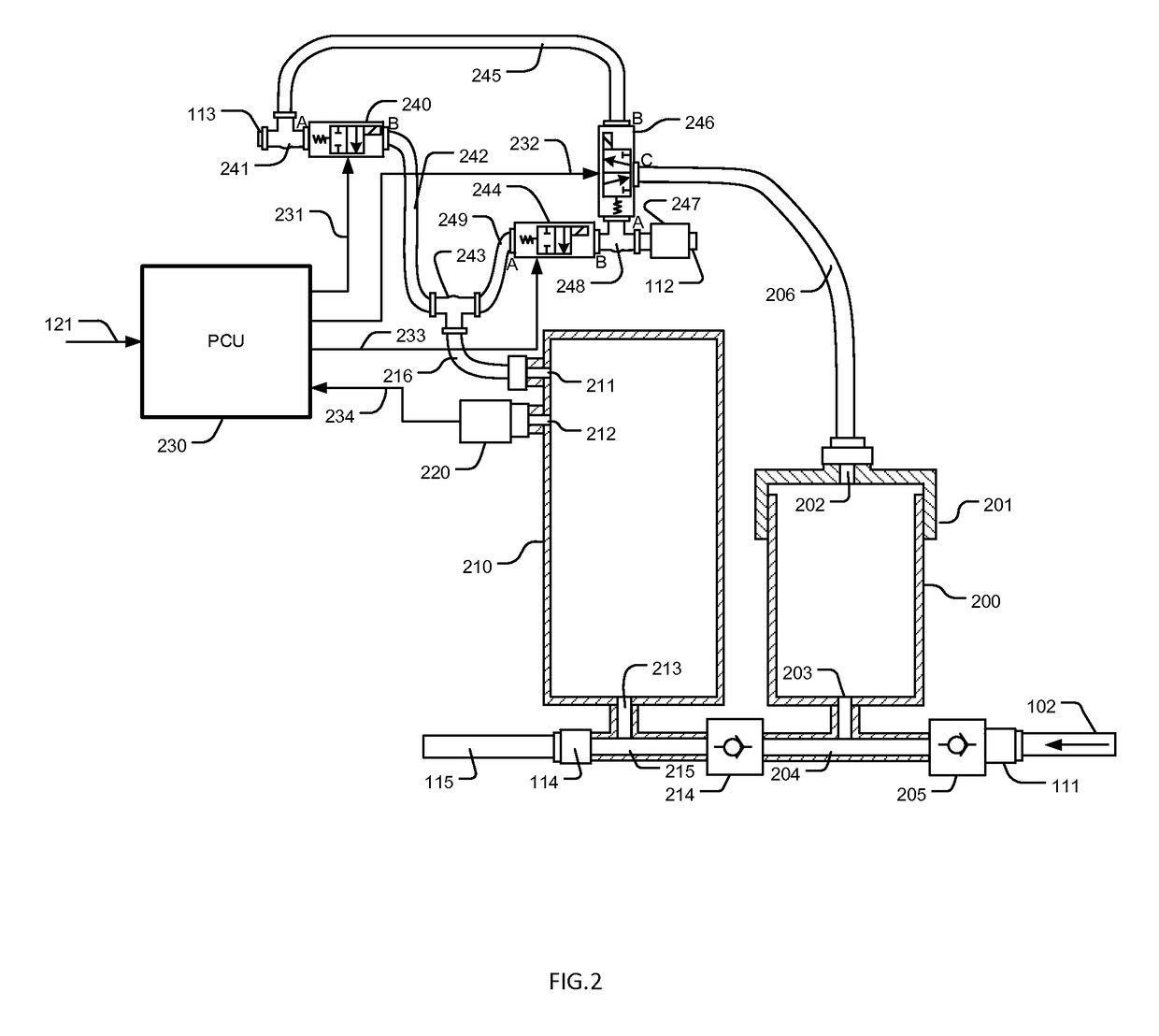Multi-stage SCR control and diagnostic system
a multi-stage scr and control technology, applied in the direction of engines, mechanical equipment, machines/engines, etc., can solve the problems of aging, nox control performance significantly influenced by dosing accuracy, and inability to effectively remove oxidative specie nox, so as to facilitate the diagnosis of catalyst failure, improve the accuracy and robustness of the control
- Summary
- Abstract
- Description
- Claims
- Application Information
AI Technical Summary
Benefits of technology
Problems solved by technology
Method used
Image
Examples
Embodiment Construction
[0034]Referring to FIG. 1, a two-stage SCR system includes two SCR devices, a front SCR device and a back SCR device. The front SCR device has a SCR catalyst 151 and an optional AMOX 152 inside, and the catalyst 151 is at the front of the AMOX 152. Upstream from the front SCR device, an injector 140, which is controlled by a DCU 120 through signal lines 123, is installed on an exhaust gas passage 150 for delivering reductant into exhaust flow, and a temperature sensor 141 is positioned upstream from the injector 140 for providing temperature sensing signals to the DCU 120 through signal lines 124. In between the injector 140 and the catalyst 151, in the exhaust gas passage 150, a mixer 158 is used for creating a uniform exhaust flow. Downstream from the AMOX 152, a NOx sensor 143 electrically connected to the DCU 120 through signal lines 126 is used for measuring NOx concentration in exhaust gas, and an exhaust gas passage 153 connects the front SCR device to the back SCR device, in...
PUM
 Login to View More
Login to View More Abstract
Description
Claims
Application Information
 Login to View More
Login to View More - R&D
- Intellectual Property
- Life Sciences
- Materials
- Tech Scout
- Unparalleled Data Quality
- Higher Quality Content
- 60% Fewer Hallucinations
Browse by: Latest US Patents, China's latest patents, Technical Efficacy Thesaurus, Application Domain, Technology Topic, Popular Technical Reports.
© 2025 PatSnap. All rights reserved.Legal|Privacy policy|Modern Slavery Act Transparency Statement|Sitemap|About US| Contact US: help@patsnap.com



